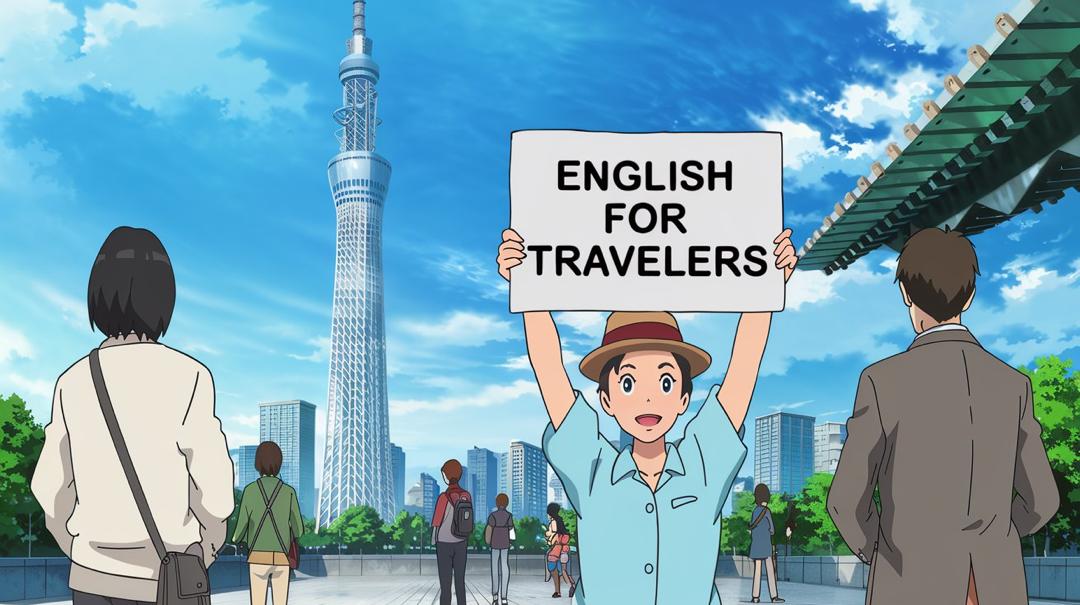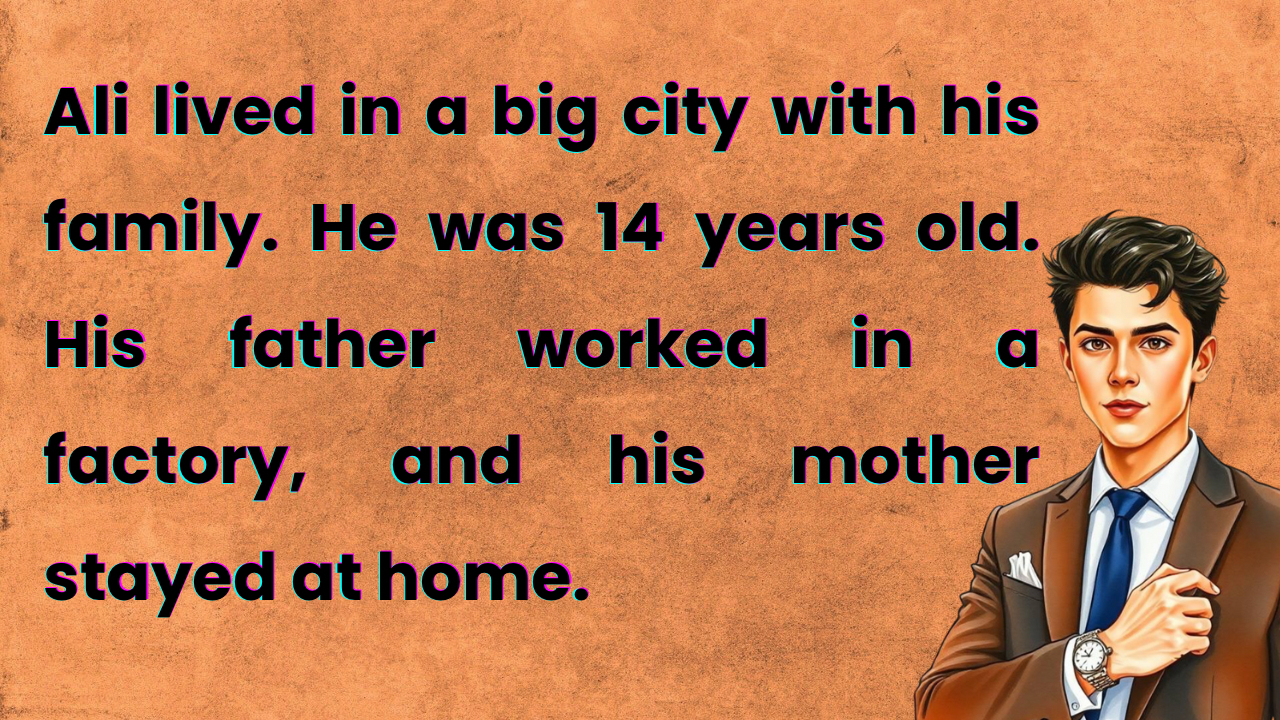Introduction
Traveling to a new country is an exciting experience, but it can also be challenging if you don’t speak the local language. Fortunately, English is widely used around the world, especially in airports, hotels, restaurants, and tourist areas. Learning basic English phrases and dialogues can make your journey smoother and more enjoyable.

Why Learn English for Traveling?
English is considered a global language, meaning that you’re likely to encounter it almost anywhere you go. Whether you’re checking in at an airport, ordering food, or asking for directions, knowing a few key phrases can help you:
– Communicate effectively in common travel situations.
– Avoid misunderstandings or confusion during your trip.
– Build confidence and independence while exploring new places.
Learning travel-specific English is especially important for A1 learners, as it focuses on practical phrases you’ll actually use rather than complicated grammar.
How These Phrases Will Help A1 Learners
If you’re new to English, don’t worry! This guide is designed for beginners, focusing on simple, easy-to-learn phrases. The dialogues include common words and basic structures, making them accessible and helpful for:
– Navigating airports, hotels, restaurants, and transportation systems.
– Handling emergencies or unexpected situations.
– Connecting with locals and fellow travelers.
Every section in this guide is packed with practical examples and short dialogues that you can use immediately. You’ll also find tips to improve your pronunciation and sound more natural.
Tips for Practicing English Before Your Trip
To get the most out of this guide, it’s important to practice regularly. Here are some tips to help you prepare for your trip:
1. Practice Speaking Out Loud: Repeating phrases aloud will help you become more confident. Focus on pronunciation and try to speak slowly and clearly.
2. Use Language Apps or Flashcards: Apps like Duolingo, Memrise, or Quizlet can help reinforce the vocabulary and phrases you’ll learn here.
3. Listen to English Conversations: Watch videos, listen to podcasts, or use online resources to hear how native speakers communicate in travel situations.
4. Role-Play Scenarios: Practice dialogues with a friend, family member, or even by yourself. Imagine you’re at an airport or restaurant and act out the conversation.
5. Keep a Phrasebook Handy: Download a digital or physical phrasebook to quickly look up phrases if you forget something during your trip.
By practicing before you travel, you’ll not only save time and energy but also enjoy your trip more by feeling confident and prepared in any situation.

Here’s a detailed draft for Chapter 1: At the Airport:
Chapter 1: At the Airport
Traveling by air can be overwhelming, especially if you’re not familiar with the process. Learning some essential English phrases and dialogues will help you navigate the airport with confidence.
1. Checking In
When you arrive at the airport, the first step is to check in for your flight. Here are some key phrases and vocabulary to help:
Key Phrases:
– “Good morning. I’d like to check in for my flight.”
– “Here’s my passport and ticket.”
– “Can I have a window/aisle seat, please?”
– “Is my baggage overweight?”
– “Do I need to pay for extra luggage?”
– “Can I have my boarding pass, please?”
Important Vocabulary:
– Passport
– Ticket
– Boarding pass
– Luggage (suitcase, carry-on, backpack)
– Overweight baggage
– Window/aisle seat
Simple Dialogue Example:
– Traveler: Good morning. I’d like to check in for my flight to New York.
– Staff: May I see your passport and ticket, please?
– Traveler: Here you go.
– Staff: Do you have any checked luggage?
– Traveler: Yes, one suitcase.
– Staff: Your luggage is fine. Here’s your boarding pass. You’ll board at Gate 12.
2. Security and Customs
Once you’ve checked in, you’ll need to go through security and customs. This can involve answering questions or following instructions.
Key Phrases:
– “Do I need to take off my shoes?”
– “Should I remove my laptop from my bag?”
– “Can I bring this liquid in my carry-on?”
– “Where should I go next?”
– “I don’t have anything to declare.”
Common Questions by Customs Officers:
– “What’s the purpose of your visit?”
– “How long will you stay?”
– “Are you traveling alone?”
– “Do you have any items to declare?”
Simple Dialogue Example:
– Officer: What’s the purpose of your visit?
– Traveler: I’m here for tourism.
– Officer: How long will you be staying?
– Traveler: For one week.
– Officer: Do you have any items to declare?
– Traveler: No, I don’t.
3. At the Gate
Before boarding your flight, you’ll need to find your gate and listen for announcements.
Key Phrases:
– “Excuse me, where is Gate 15?”
– “Has the boarding started?”
– “Is the flight delayed?”
– “What time does the boarding begin?”
Common Announcements to Listen For:
– “Flight [number] to [destination] is now boarding at Gate [number].”
– “This is the final call for passengers on Flight [number].”
– “Flight [number] has been delayed. Please wait for further updates.”
Simple Dialogue Example:
– Traveler: Excuse me, where can I find Gate 15?
– Staff: Go straight ahead, then turn right. It’s on your left.
– Traveler: Thank you!
4. Lost and Found
If you lose something at the airport, you may need to ask for help at the lost and found desk.
Key Phrases:
– “I’ve lost my bag. Can you help me?”
– “Where is the lost and found desk?”
– “I left my passport at security. Has it been found?”
– “What should I do to report a lost item?”
Simple Dialogue Example:
– Traveler: Excuse me, I lost my jacket in the waiting area. Where can I report it?
– Staff: Please go to the lost and found desk near Gate 10.
– Traveler: Thank you.
Here’s a detailed draft for Chapter 2: Hotel Check-In and Accommodation:
Chapter 2: Hotel Check-In and Accommodation
Arriving at a hotel can be one of the most important moments of your trip. Knowing how to communicate with hotel staff in English will help ensure a smooth and comfortable stay.
1. Arriving at the Hotel
When you arrive at a hotel, the first step is to greet the receptionist and provide your booking information.
Key Phrases:
– “Good evening. I have a reservation.”
– “I’d like to check in, please.”
– “I booked a single/double room.”
– “Do you have any rooms available?”
– “How much is a room per night?”
Important Vocabulary:
– Reservation
– Single room / Double room
– Key card
– Lobby
– Reception / Front desk
Simple Dialogue Example:
– Traveler: Good afternoon. I have a reservation under the name Smith.
– Receptionist: Welcome, Mr. Smith. Let me check. Yes, we have your booking for a double room for three nights.
– Traveler: That’s correct.
2. Checking In
After confirming your booking, the receptionist may ask for additional information or payment.
Key Phrases:
– “Can I see your passport, please?”
– “Do you have a credit card for the payment?”
– “Your room is on the second floor.”
– “Here is your key card.”
Simple Dialogue Example:
– Receptionist: May I see your passport, please?
– Traveler: Sure, here it is.
– Receptionist: Thank you. Your room is on the third floor, room 305. Here is your key card.
– Traveler: Thank you. What time is breakfast?
– Receptionist: Breakfast is served from 7:00 to 10:00 in the dining area.
3. Asking for Services
Once you’re in your room, you might need to request certain services or items.
Key Phrases:
– “Can I have room service, please?”
– “I need an extra towel.”
– “What is the Wi-Fi password?”
– “Can I get a wake-up call at 7 a.m.?”
– “Is there a laundry service available?”
Simple Dialogue Example:
– Traveler: Hi, can I have room service, please?
– Receptionist: Sure. What would you like to order?
– Traveler: A club sandwich and orange juice, please.
– Receptionist: We’ll deliver it to your room in 20 minutes.
4. Complaints or Issues
Sometimes, things might not go as planned. It’s helpful to know how to explain problems politely.
Key Phrases:
– “The air conditioner isn’t working.”
– “There’s no hot water in the bathroom.”
– “I can’t connect to the Wi-Fi.”
– “The room is noisy. Can I change to a quieter one?”
– “There’s a problem with my key card.”
Simple Dialogue Example:
– Traveler: Hello, I have a problem with my room.
– Receptionist: I’m sorry to hear that. What seems to be the issue?
– Traveler: The air conditioner isn’t working.
– Receptionist: I’ll send someone to fix it right away.
With these essential phrases and dialogues, you’ll be prepared for every step of your hotel experience, from check-in to resolving any issues.
Here’s a detailed draft for Chapter 3: Ordering Food and Dining Out:
Chapter 3: Ordering Food and Dining Out
Eating at restaurants while traveling is a great way to experience the local culture. Knowing basic English phrases will help you order food, ask questions, and enjoy your dining experience without confusion.
1. At a Restaurant
When you arrive at a restaurant, you may need to ask for a table or wait to be seated.
Key Phrases:
– “Table for two, please.”
– “Do you have a table available?”
– “Can I see the menu, please?”
– “Is this table reserved?”
– “I’d like to sit by the window, please.”
Important Vocabulary:
– Menu
– Starters / Appetizers
– Main courses
– Desserts
– Beverages (drinks)
– Vegetarian / Vegan / Gluten-free
Simple Dialogue Example:
– Traveler: Good evening. Do you have a table for two?
– Waiter: Yes, please follow me. Here is your menu.
– Traveler: Thank you.
2. Placing an Order
Once seated, you’ll need to let the waiter know what you’d like to eat or drink.
Key Phrases:
– “I’d like to order, please.”
– “Can I have the chicken salad?”
– “I’ll have a coffee, please.”
– “What do you recommend?”
– “I’ll start with the soup of the day.”
Simple Dialogue Example:
– Waiter: Are you ready to order?
– Traveler: Yes. Can I have the spaghetti and a glass of red wine?
– Waiter: Sure. Anything else?
– Traveler: No, that’s all for now. Thank you.
3. Asking Questions About the Menu
Sometimes, you may need to clarify details about the dishes.
Key Phrases:
– “What’s in this dish?”
– “Is it spicy?”
– “Does this contain nuts?”
– “Is it vegetarian?”
– “How is this prepared?”
Simple Dialogue Example:
– Traveler: Excuse me, what’s in the seafood pasta?
– Waiter: It’s made with shrimp, clams, and a garlic cream sauce.
– Traveler: That sounds great. I’ll have that, please.
4. Paying the Bill
After enjoying your meal, you’ll need to ask for the bill and possibly leave a tip.
Key Phrases:
– “Can I have the check, please?”
– “Do you accept credit cards?”
– “Is service included?”
– “Keep the change.”
– “How much should I tip?”
Simple Dialogue Example:
– Traveler: Excuse me, can I have the check, please?
– Waiter: Of course. Here you go.
– Traveler: Do you accept credit cards?
– Waiter: Yes, we do.
These phrases and dialogues will help you enjoy your dining experiences with ease, from finding a table to paying the bill.
Here’s a detailed draft for Chapter 4: Asking for Directions and Transportation:

Chapter 4: Asking for Directions and Transportation
Getting around in a foreign country can be tricky, but knowing how to ask for directions and use public transportation in English will make your journey much smoother.
1. Asking for Directions
When you’re in a new place, it’s common to ask locals for help finding landmarks or locations.
Key Phrases:
– “Excuse me, where is the nearest bus stop?”
– “How do I get to the train station?”
– “Is this the way to the city center?”
– “Can you show me on the map?”
Common Responses to Understand:
– “Go straight and turn left.”
– “It’s about 10 minutes from here.”
– “Take the second street on the right.”
– “It’s across from the bank.”
Simple Dialogue Example:
– Traveler: Excuse me, how do I get to the museum?
– Local: Go straight for two blocks, then turn right. It’s next to the library.
– Traveler: Thank you!
2. Using Public Transport
Understanding how to use public transport is essential when traveling.
Vocabulary:
– Bus / Train / Subway
– Ticket / Pass
– Platform / Station
– Route / Stop
– Taxi / Ride-share
Key Phrases:
– “Where can I buy a ticket?”
– “How much is a ticket to [destination]?”
– “Does this bus go to the airport?”
– “What time does the train leave?”
– “Can you drop me off at [location]?”
Simple Dialogue Example (Bus):
– Traveler: Excuse me, does this bus go to the shopping mall?
– Driver: Yes, get off at the fourth stop.
– Traveler: Thank you. How much is the fare?
– Driver: It’s $2.
Simple Dialogue Example (Taxi):
– Traveler: Hi, can you take me to the Grand Hotel?
– Driver: Sure. It’s about 15 minutes from here.
3. Dealing with Maps or GPS
Sometimes, you may need to explain locations using a map or GPS.
Key Phrases:
– “Can you show me where I am on this map?”
– “I’m looking for this street. How do I get there?”
– “Is it near any landmarks?”
– “Can you point me in the right direction?”
Simple Dialogue Example:
– Traveler: Excuse me, I’m trying to find Park Avenue. Can you help me?
– Local: Sure. It’s two blocks down, near the big fountain.
4. When Lost
If you lose your way, it’s important to know how to ask for help.
Key Phrases:
– “Excuse me, I’m lost. Can you help me?”
– “I don’t know how to get to [location].”
– “Can you guide me to the nearest hotel?”
– “What’s the quickest way to get back to the city center?”
Simple Dialogue Example:
– Traveler: Excuse me, I’m lost. I was trying to find the train station.
– Local: Oh, you’re close. Go straight and turn left at the next light.
– Traveler: Thank you so much!
With these phrases and dialogues, you’ll be well-prepared to navigate any city, whether you’re asking for directions, using public transport, or finding your way when lost.
Here’s a detailed draft for Chapter 5: Day-to-Day Activities:
Chapter 5: Day-to-Day Activities
Travel involves more than just transportation and accommodation—it’s about the small, everyday interactions that make up your experience. This chapter focuses on essential phrases for daily routines and activities.
1. Morning Routines
Starting your day often includes breakfast or setting plans.
Key Phrases:
– “Can I have a wake-up call at 7 a.m., please?”
– “Is breakfast included?”
– “What time is breakfast served?”
– “Can I get coffee to go?”
– “Do you have vegetarian options for breakfast?”
Simple Dialogue Example:
– Traveler: Good morning. Is breakfast included with my room?
– Receptionist: Yes, it’s served from 7:00 to 10:00 in the dining area.
– Traveler: Thank you. Can I get coffee to go?
– Receptionist: Of course.
2. At Work or Business Meetings (if applicable)
For travelers on business trips, professional communication is essential.
Key Phrases:
– “Nice to meet you.”
– “Thank you for arranging this meeting.”
– “Can we discuss the agenda?”
– “I’ll send you an email with the details.”
– “Let’s schedule a follow-up meeting.”
Simple Dialogue Example:
– Traveler: Good morning. Thank you for meeting with me today.
– Colleague: Good morning. It’s a pleasure. Shall we go over the agenda?
– Traveler: Yes, let’s start.
3. Free Time Activities
During your free time, you might explore local attractions or go shopping.
Visiting Attractions:
– “What are the opening hours for the museum?”
– “How much is the entrance fee?”
– “Is there a guided tour available?”
– “Can I take photos here?”
Shopping Dialogues:
– “How much is this?”
– “Do you have this in another size/color?”
– “Can I pay by card?”
– “Is this on sale?”
– “Can I get a receipt, please?”
Simple Dialogue Example (Shopping):
– Traveler: Excuse me, how much is this T-shirt?
– Shopkeeper: It’s $25.
– Traveler: Do you have it in a larger size?
– Shopkeeper: Yes, here you go.
4. Evening Plans
In the evening, you might want to socialize or enjoy local nightlife.
Phrases for Socializing:
– “What’s a good place to eat around here?”
– “Do you have any recommendations for bars?”
– “I’d like to book a table for two at 8 p.m.”
– “What time does the event start?”
– “Can I join this group activity?”
Simple Dialogue Example (At a Bar):
– Traveler: Hi, can I see the drinks menu?
– Bartender: Sure, here it is.
– Traveler: I’ll have a mojito, please.
These phrases will help you navigate daily activities, whether you’re enjoying a relaxing morning, exploring new places, or planning your evening.
Here’s a detailed draft for Chapter 6: Emergency Situations:
Chapter 6: Emergency Situations
Emergencies can happen at any time, and knowing how to communicate in English during these moments is crucial. This chapter will provide essential phrases and vocabulary to help you handle health issues, lost items, or the need for police assistance.
1. Health-Related Issues
If you’re feeling unwell or need medical assistance, these phrases will help you explain your situation.
Key Phrases:
– “I need a doctor.”
– “Where is the nearest hospital?”
– “Can you call an ambulance?”
– “I’m not feeling well.”
– “I have a fever/headache/stomachache.”
– “Do you have painkillers or cold medicine?”
Important Vocabulary:
– Doctor / Nurse
– Hospital / Clinic
– Pharmacy / Drugstore
– Prescription / Over-the-counter medicine
– Allergy / Symptoms
Simple Dialogue Example (At a Pharmacy):
– Traveler: Excuse me, I need something for a headache.
– Pharmacist: Sure, here are some painkillers. Take one tablet every six hours.
– Traveler: Thank you.
Simple Dialogue Example (At a Hospital):
– Traveler: I’m not feeling well. I think I have a fever.
– Nurse: Let me take your temperature.
2. Lost Items
Losing your belongings can be stressful, but these phrases will help you explain the situation and seek assistance.
Key Phrases:
– “I’ve lost my passport.”
– “Where is the lost and found office?”
– “I left my bag on the bus.”
– “Can you help me find my wallet?”
– “I lost my phone. Is there a way to track it?”
Important Vocabulary:
– Passport / ID
– Wallet / Purse
– Phone / Luggage
– Lost and Found
– Claim form
Simple Dialogue Example (Lost Passport):
– Traveler: Excuse me, I’ve lost my passport. What should I do?
– Hotel Staff: You should contact your embassy. I can help you find the address.
Simple Dialogue Example (Lost and Found):
– Traveler: Hi, I left my bag on the bus. Is there a lost and found office?
– Bus Station Staff: Yes, it’s over there. You’ll need to fill out a form.
3. Police Assistance
If you’re in an emergency that requires police help, it’s important to stay calm and provide clear information.
Key Phrases:
– “I need help from the police.”
– “I’ve been robbed.”
– “Someone stole my bag.”
– “Can you help me file a report?”
– “Where is the nearest police station?”
Simple Dialogue Example (Reporting a Theft):
– Traveler: Excuse me, someone stole my wallet.
– Police Officer: I’m sorry to hear that. Where did it happen?
– Traveler: It was on the subway about 10 minutes ago.
– Police Officer: Please come to the station to file a report.
Knowing these phrases will help you navigate emergencies with confidence and ensure you can get the assistance you need quickly.
Here’s a detailed draft for Chapter 7: Practice Exercises and Dialogues:
Chapter 7: Practice Exercises and Dialogues
Practicing English is the best way to build confidence and improve communication skills. This chapter provides role-play scenarios, exercises, and tips to help learners solidify what they’ve learned throughout the book.
1. Role-Play Scenarios
The following mini-dialogues are designed for learners to practice real-life situations based on the previous chapters.
At the Airport:
– Learner A (Traveler): Excuse me, where is the check-in counter for Flight 123?
– Learner B (Airline Staff): It’s at counter 5, straight ahead.
– Learner A: Thank you.
At a Restaurant:
– Learner A (Customer): Can I have the chicken sandwich, please?
– Learner B (Waiter): Sure. Would you like anything to drink?
– Learner A: Yes, a glass of water, please.
Asking for Directions:
– Learner A (Traveler): Excuse me, how do I get to the nearest train station?
– Learner B (Local): Go straight for two blocks, then turn left.
At a Pharmacy:
– Learner A (Customer): I have a headache. Can you recommend something?
– Learner B (Pharmacist): Sure, you can take this medicine.
Encourage learners to practice switching roles to experience both sides of the conversation.
2. Common Mistakes to Avoid
To sound more natural and avoid miscommunication, keep these tips in mind:
1. Overusing Formal Phrases:
– Many learners rely on overly formal phrases. For example:
– Instead of “I would like to kindly ask for some water,” say “Can I have some water, please?”
2. Forgetting to Use Polite Words:
– Always use polite words like “please,” “thank you,” and “excuse me.”
– Example: “Excuse me, where is the bus stop?”
3. Mixing Up Vocabulary:
– Learners often confuse similar words. Practice common vocabulary to avoid mistakes.
– Example: “bill” (restaurant) vs. “receipt” (shopping).
4. Speaking Too Fast or Too Slowly:
– Speak at a steady pace to help others understand you clearly.
5. Not Asking for Clarification:
– If you don’t understand something, it’s okay to ask.
– Example: “Can you repeat that, please?” or “What does that mean?”
These practice exercises and tips will help learners feel more confident in real-life situations. Would you like me to create more role-play scenarios or add specific exercises for any chapter?
Here’s a draft for the Conclusion:
Conclusion
Congratulations on completing this guide! By now, you should feel more confident using basic English for traveling. Remember, the more you practice, the better you’ll get, and you’ll be ready for any situation that comes your way.
Encouragement to Practice Regularly
Consistency is key when learning a new language. Practice as often as possible—whether it’s through speaking with native speakers, using English in your daily life, or revisiting the phrases you’ve learned. Every little bit helps, and you’ll notice progress over time.
Suggestions for Additional Resources
To continue improving your English, here are some useful resources:
– Duolingo – A popular app for practicing vocabulary and grammar.
– Memrise – A great app for learning phrases and vocabulary through repetition.
– BBC Learning English – Offers free videos, quizzes, and audio lessons.
– HelloTalk – An app that connects you with native speakers for language exchange.
– YouTube Channels – Channels like English with Lucy or Learn English with TV Series offer great content for learning practical English.
Importance of Confidence in Speaking
Lastly, confidence is crucial. Don’t be afraid to make mistakes—every mistake is an opportunity to learn! English speakers will appreciate your efforts, and you’ll find that with each conversation, you become more comfortable. Keep practicing, and soon, you’ll find it easier to speak, understand, and enjoy communicating in English.
Safe travels, and good luck on your language learning journey!




